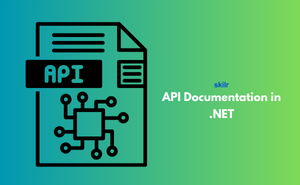👇 CELEBRATE CLOUD SECURITY DAY 👇
00
HOURS
00
MINUTES
00
SECONDS

API Documentation in .NET means preparing detailed guides that describe how an API works so that other developers can use it correctly. Just like an instruction manual explains how to use a machine, API documentation explains how different parts of a software system interact. It includes examples, rules, and descriptions that help programmers avoid mistakes and build reliable applications.
Through this certification, learners gain practical knowledge of documenting APIs effectively in the .NET ecosystem. They will practice using tools like Swagger and XML comments to generate easy-to-read references. By mastering documentation skills, professionals can create APIs that are not only powerful but also user-friendly and widely adaptable in real-world projects.
This exam is ideal for:
Domain 1 - Introduction to API Documentation
Domain 2 - Documentation in .NET
Domain 3 - Using Swagger/OpenAPI
Domain 4 - Technical Writing for APIs
Domain 5 - Advanced Documentation Practices
Domain 6 - Collaboration & Maintenance
Industry-endorsed certificates to strengthen your career profile.
Start learning immediately with digital materials, no delays.
Practice until you’re fully confident, at no additional charge.
Study anytime, anywhere, on laptop, tablet, or smartphone.
Courses and practice exams developed by qualified professionals.
Support available round the clock whenever you need help.
Easy-to-follow content with practice exams and assessments.
Join a global community of professionals advancing their skills.
It reduces confusion and speeds up API adoption.
Yes, Swagger and OpenAPI are covered in detail.
Yes, including login, tokens, and secure endpoints.
Yes, explaining error codes and troubleshooting is part of the curriculum.
Yes, clear documentation helps teams collaborate more effectively.
Finance, healthcare, e-commerce, cloud, and software services.
Yes, managing API versions and updates is included.
It enhances roles like developer, API writer, and backend engineer.
Yes, clear documentation is highly valued in freelance API projects.
Yes, it helps writers create accurate and developer-friendly content.
Yes, beginners with some programming knowledge can benefit.
Swagger/OpenAPI, XML comments, and .NET documentation utilities.
No, basic .NET knowledge is enough to start.
It makes APIs easier to understand, use, and maintain.
Developers, technical writers, and software professionals working with APIs in .NET.